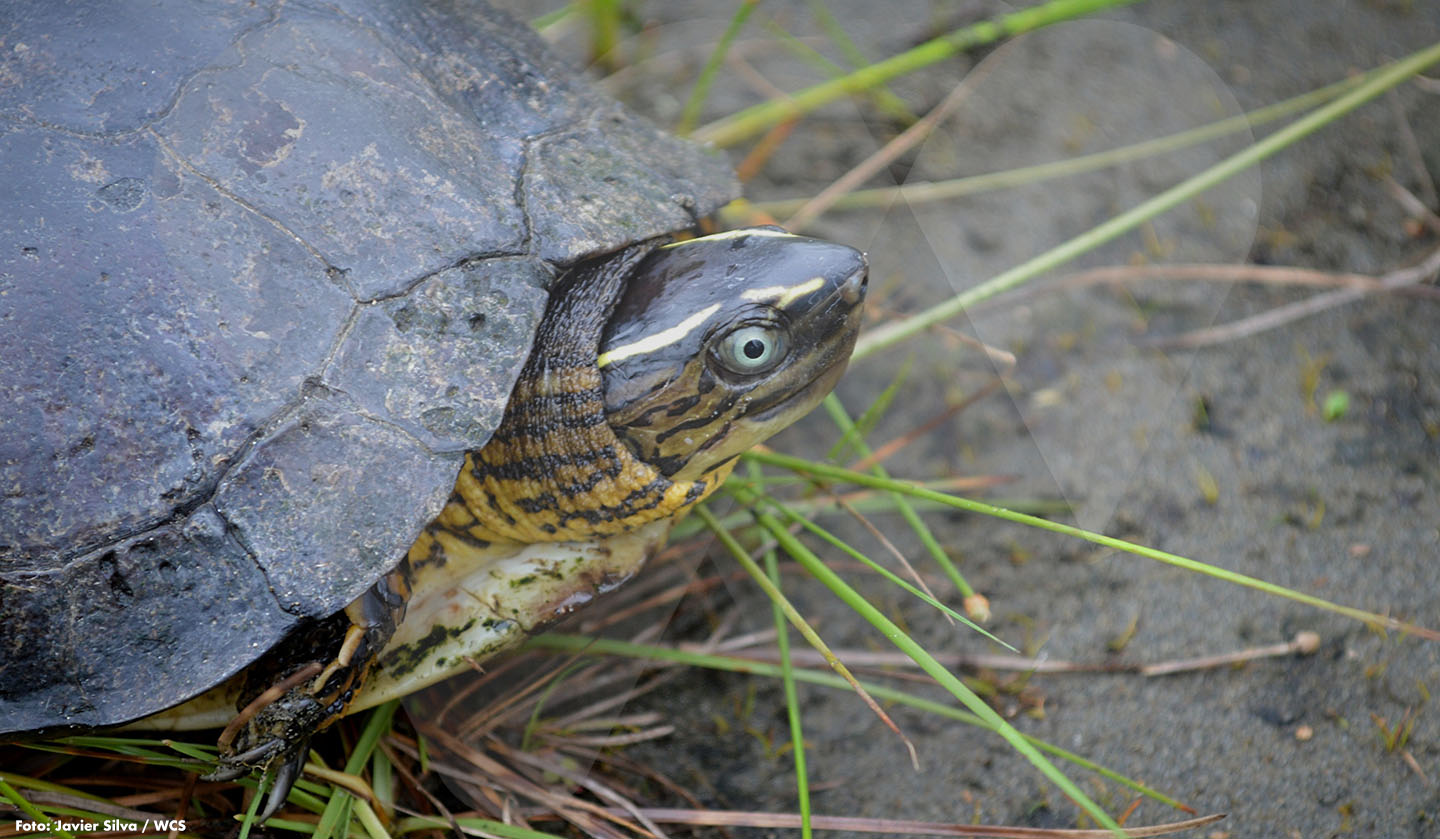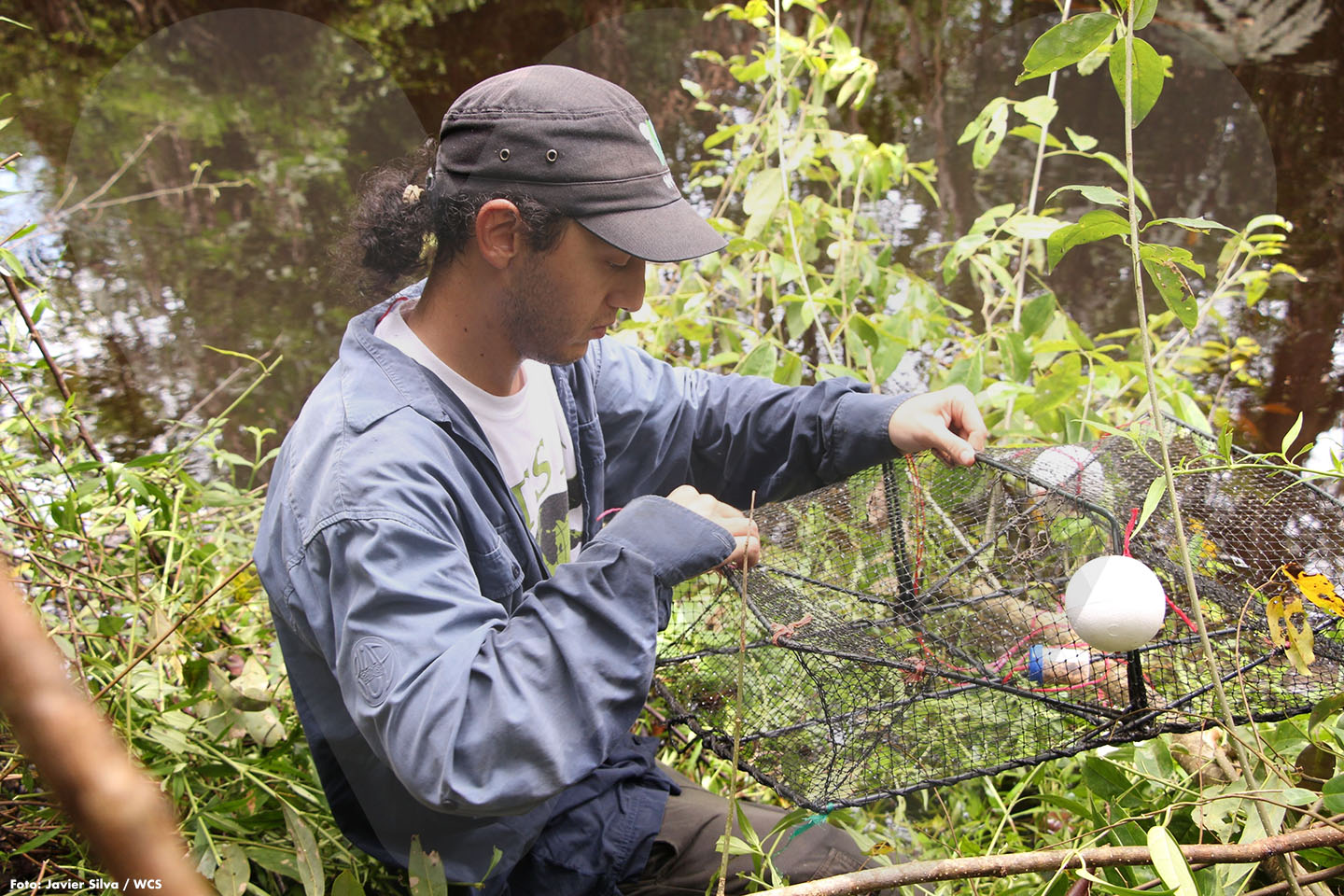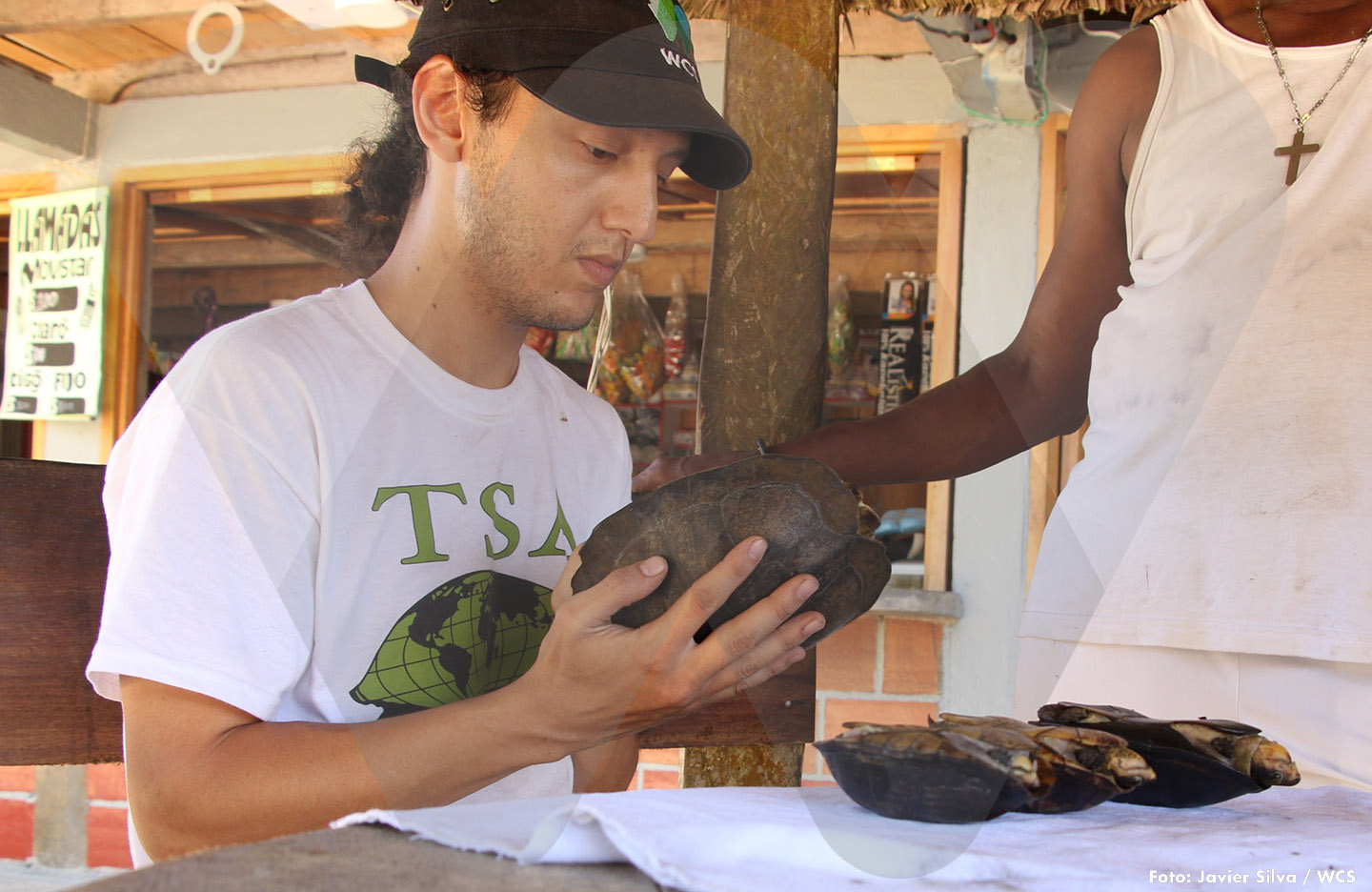A valuable protected area for the turtles that live in the rivers

In the Integrated Management Regional District 'El Encanto de los Manglares del Bajo Baudó', researchers are on the track of Dunn’s Mud Turtle, species that only lives in Colombia.
During 10 days, Igor Felipe Valencia, biologist of the Pontificia Universidad Javeriana of Cali, captured and described the physical characteristics of 55 turtles that he found during the 'Participatory characterization of conservation targets of the Integrated Management Regional District El Encanto de los Manglares in Bajo Baudó' (Chocó). This, as part of WCS Colombia's ongoing study in that area, teamed with Concosta and Codechocó, to provide information on species considered conservation targets.
During his first sampling session, in March 2019, with the support of an experienced local assistant, Valencia identified mainly three species: Rhinoclemmys melanosterna, sometimes known as the Colombian wood turtle; Rhinoclemmys nasuta, called large-nosed wood turtle; and the river turtle with the scientific name of Kinosternon leucostomum.

To find those turtles, for five days, the researcher installed 10 traps that he baited with tuna, plantain and leaves and placed semi-submerged in streams very near to the community of Guineal (area known as ‘Rastrojos’). Another monitored site was ‘El Firme’, where 7 traps were installed for three days. All the captured specimens were photographed and analyzed and then released back into their habitat.
The inhabitants of this region have hunted turtles, iguanas and other reptiles intensely, mainly during Holy Week, when they eat them. Researchers have yet to determine the impact of this tradition on the populations of these animals.
“After speaking with the community, I found a knowledge gap in the differentiation of the turtles. For many, all turtles are identical, are exactly alike, regardless of the species. But we believe a great variety can exist there. As a matter of fact, our objective is to determine, with certainty, which turtles live in that area”, commented Valencia.
Some existing species have not yet been seen, but researchers are certain that they live in the region. Such is the case of Kinosternon dunni, commonly called Dunn’s mud turtle. It only lives in Colombia (endemic to the country) and its distribution is very restricted. Finding a specimen is, consequently, extremely difficult. As it lives in a very small zone, it is highly vulnerable to extinction, especially as a consequence of the possible pressures on the environment where it lives.
In the same protected area ‘El Encanto de los Manglares del Bajo Baudó’, Chelydra acutirostris, commonly called snapping turtle, can probably also be found.

Turtles control plant populations that could affect water bodies if not controlled. They also disperse seeds, form part of the food chain and are crucial for good soil maintenance.
Aside from the consumption of their meat by humans, the destruction of their habitat is one of the greatest threats they face.
“Colombia is a biodiverse territory in turtles and Chocó is no exception. This is something we must prove and is one of the reasons of the importance of the characterization being performed by WCS Colombia in the region”, concluded Valencia.